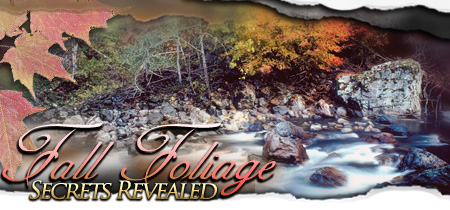
The Science Behind Why Leaves Change Color
Some qualities of nature that amaze during childhood become less wonderful over time, but the splendor of autumn seems to inspire even more wonder with age. So, is this brilliant display of beauty just Mother Nature's fall fashion show, or is there a method to the magic? Arborists at SavATree have called upon their professional knowledge and personal observations to provide answers to tree curiosities that accompany the fall season and share tips to help maximize the leaf peeping experience.
When & How Leaves Change Color
"Trees interpret increasing darkness as a sign that winter is on its way and start to make adjustments for freezing temperatures and harsh conditions," said SavATree Arborist Brad Gurr.
As food production slows down, the chlorophyll that gives leaves their green color begins to break down and disappear. After this happens, the yellow and orange carotenoids already in the leaf become visible. Red and purple colors come from anthocyanins produced by some species during autumn in response to sunlight and excess sugars that get trapped in the leaves. Temperature, light and water supply conditions have the greatest influence over the timing, intensity and duration of fall color.
"Optimal conditions generally consist of cool, but not freezing, temperatures, mild late-season drought and an abundance of bright, sunny days," said Gurr, "Late season warmth usually means more chlorophyll and that can delay the onset of fall. Too much drought or an early frost weakens intensity."
The "wave" of color usually starts at the end of September. It runs from north to south, from mountains down to valleys, beginning with light yellows and ending with the darkest reds early in November. Peaks follow the same pattern.
Why Leaves Fall & What Happens to Them
“Trees interpret increasing darkness as a sign that winter is on its way and start to make adjustments for freezing temperatures and harsh conditions” |
While humans revel in fall color, trees are making changes to keep from drying out in the severely cold, dry air of winter. Evergreens have needle-like foliage with a heavy wax-like coating to help keep in moisture, and the fluid in their cells contains substances resistant to freezing. However, broadleaf trees contain a thin, watery sap that freezes easily.
"Most of their parts, including stems, twigs and buds are capable of surviving extreme cold," said SavATree Arborist David Horvath, "but the leaf tissues are very tender. Trees must seal them off before going dormant in order to ensure their survival through the winter."
As leaf veins transfer nutrients to the trunk and roots, a special corky separation layer of cells gradually forms where the leaf stem is attached to the tree, and it begins to sever the attachment. When food production ends, the tree seals the cut. Without that connection for support, wind and gravity drop the leaves away from the tree. Once on the ground, leaves decompose, restock the soil with nutrients and help make up the spongy layer of soil that absorbs and holds rainwater.
"Fall is also an opportunity for homeowners to monitor obvious tree health indicators and seek help if needed. Early color and premature leaf drop are signs of stress and may be symptoms of tree disease, insect infestation or another issue," said Horvath.
Tips to Maximize the Fall Foliage Experience
The most intense fall colors occur in areas with similar trees that turn color at the same time like in New England. For the most varied and longest lasting color, seek areas with a dozen or more varieties. Consider leaving your car behind and taking in views on a hike, boat or train ride. Try to observe scenery at different times during the day to experience the varying, but equally stunning, light effects produced in morning, afternoon and twilight.
"To significantly enhance your enjoyment of the autumn season remember to use all five of your senses," said SavATree President Daniel van Starrenburg, "There's more to autumn than an eye-popping palette of color. There are also sweet aromas, the sound of swirling leaves blowing by in the wind, the unique texture of bark, and that crunchy feel beneath your feet. Fall is harvest season and a great time to enjoy the taste of fresh fruits and vegetables at an outdoor picnic."
Source: SavATree |